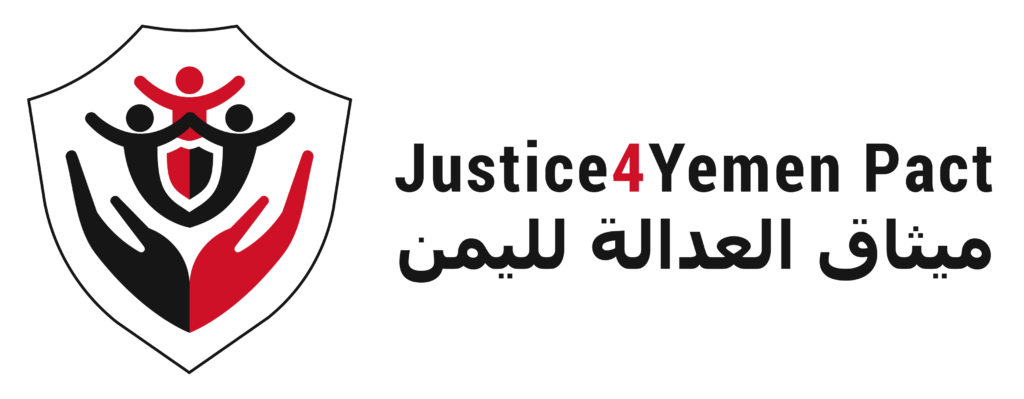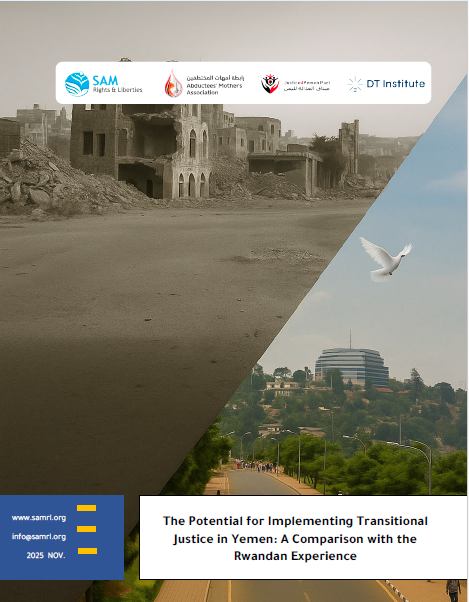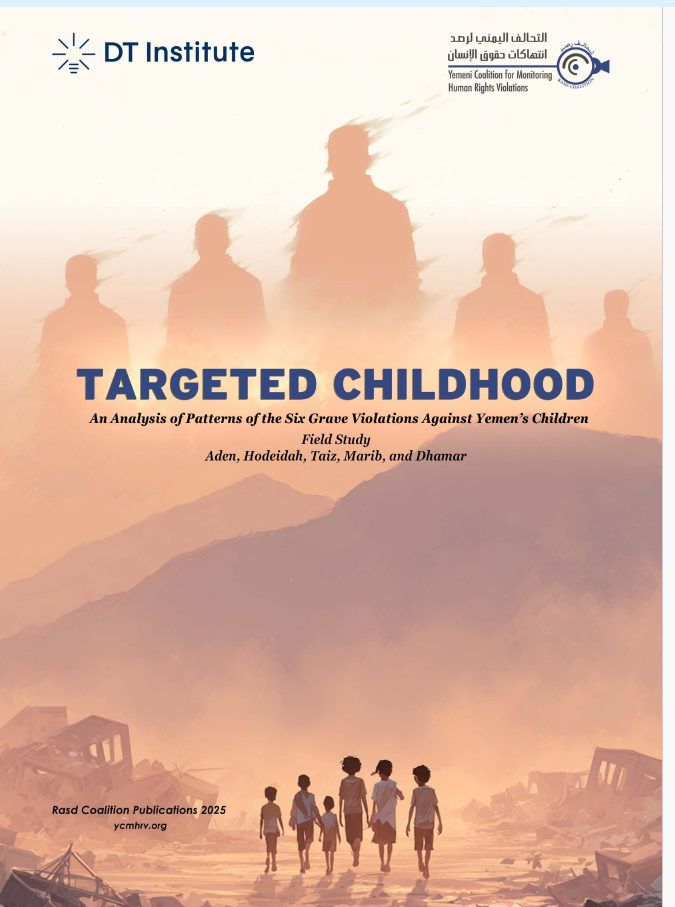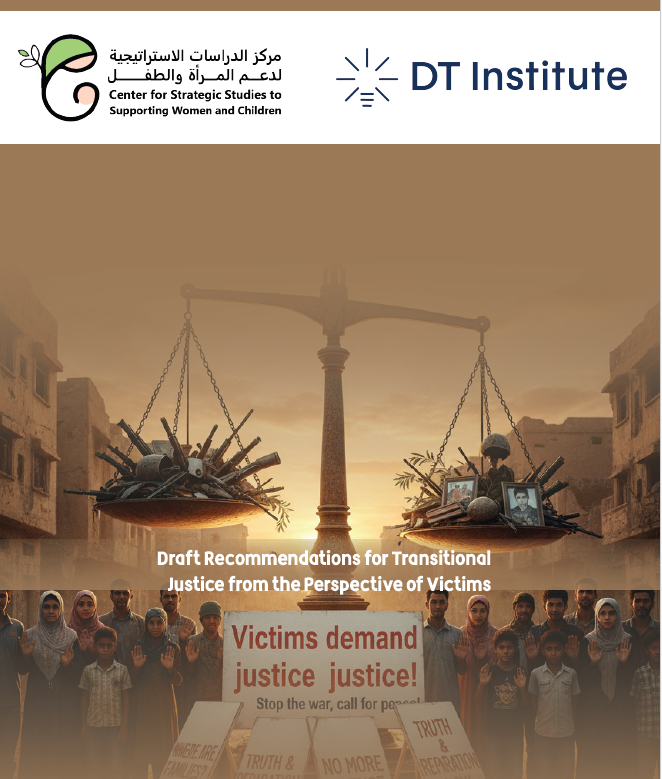| Incident: | Injury of Two Girls by a Landmine Explosion in Abyan |
| Date: | January 11, 2025 |
| Location: | Hosn Saeed camp, Shuqra District, Abyan Governorate |
| Type of Violation: | Injury by Explosion |
Introduction:
For Iman Amin Zaher (6) and her sister Mariam (8), who were displaced from Hodiedah by the war, the Hosn Saeed camp in Abyan was intended to be a place of safety. Yet on January 11, 2025, that refuge revealed a hidden and deadly threat. While playing near their camp, the girls were severely injured by an unexploded ordnance—an object they did not recognize as lethal. Although the tragedy itself was unmistakable, the origin of the device and the question of responsibility were quickly clouded by a familiar pattern of information warfare.
Information Warfare
The pro-Houthi channel Yemen Today reported the incident, but its coverage was contradictory and vague. The report oscillated between labeling the device as a “bomb” and as unexploded remnants of what it called “the aggression”—a term the group uses to refer to munitions from the Saudi-led Arab Coalition, whose combat operations in Yemen ceased over three years ago, following the April 2022 truce. This terminology is carefully crafted to deflect blame and obscure the true origin of the explosive device.
In contrast, the police force in Shuqra district—under the internationally recognized government—issued a clear and direct statement. It confirmed the injury of the two displaced girls and identified the cause as a “landmine planted by Houthi militias” during previous clashes with government forces. This statement directly challenges the narrative promoted by Houthi media and points to the group’s responsibility for the lingering explosive hazards across Yemen.
A Contaminated Landscape
This incident underscores a devastating reality for millions of Yemenis, especially children: the country is littered with explosive remnants of war. While the primary responsibility for planting these mines lies with the Houthis group, Rasd Coalition also highlights the duty of the internationally recognized government to intensify demining efforts and, crucially, to conduct public awareness campaigns in areas under its control—particularly in displacement camps often located near former frontlines. Families fleeing conflict should not find themselves in new zones of danger.
A Double Tragedy
Iman and Mariam’s injuries represent a dual tragedy. First, the physical and psychological trauma caused by the explosion. Second, the informational trauma inflicted by conflicting reports that exploit their suffering for political gain. The use of vague terms like “remnants of aggression” is not a minor detail—it is a calculated tactic of disinformation designed to evade accountability. It creates doubts around every incident, ensuring that victims are not only harmed by conflict but also denied a clear understanding of its source.
Rasd Coalition calls for renewed focus on demining and accountability for all parties responsible for the deadly legacy they leave behind.
Disinformation as a Globalized Weapon
Disinformation in wartime has historical roots and has evolved with modern tools, and deployed techniques such as:
- Direct fabrication: Spreading false claims (e.g., Houthi allegations of “coalition remnants”)
- Context manipulation: Presenting partial truths while omitting critical details (e.g., ignoring Houthi responsibility for mine-laying)
Today, these tactics have been amplified through social media, where bots and fake accounts spread false narratives six times faster than verified facts (Oxford University, 2024).
In Yemen, the Houthi model of disinformation—termed “soft warfare”—has been documented by the Yemen Policy Center (2024) as involving:
- Media monopoly: Blocking 120 opposition websites and controlling 90% of local outlets
- Narrative militarization: Justifying violence by portraying victims as “enemies” (e.g., claiming children were injured by “coalition mines”)
- Rejection of international investigations to avoid accountability (UN report)
This model aligns with warnings from Human Rights Watch: “Disinformation in conflict zones increases civilian deaths by 40%, as it obstructs rescue and clearance operations” (2023).
Disinformation as a Compound Crime
Multiple international studies confirm that disinformation in war:
- Institutionalizes impunity: 78% of crimes surrounded by disinformation are never investigated by the UN
- Kills twice: Physically—by delaying medical aid; and morally—by distorting victims’ reputations
Disinformation is not mere falsehood—it is a weapon of mass destruction that prolongs conflict. As UN war crimes expert Dr. Elena Garcia states:
“When truth is stolen… justice is killed in its cradle.”
Conclusion
The case of Iman and Mariam Zaher is not a simple wartime tragedy—it is a stark illustration of a calculated modern military strategy. The initial physical violence of the explosion is deliberately compounded by a second assault: informational confusion designed to blur responsibility and paralyze justice.
As the report shows, this is not an isolated incident but part of a sophisticated tactic with historical precedents now adapted to the digital age. The goal is to create a permanent state of impunity by systematically dismantling the factual record—ensuring every victim is violated twice and every crime erased and perpetrators absolved.
Combating this “deadly mechanism of killing” requires a shift in international response. Traditional human rights documentation must now be intrinsically linked to digital investigation and disinformation analysis. The UN and relevant legal bodies must develop protocols to swiftly debunk false narratives and explicitly include information operations as part of war crimes investigations. Social media platforms must be held accountable for the role their algorithms play in amplifying conflict-related disinformation.
Ultimately, defending truth is no longer just a moral imperative—it is a strategic necessity to protect civilians, ensure accountability, and pave any viable path toward a just peace in Yemen





